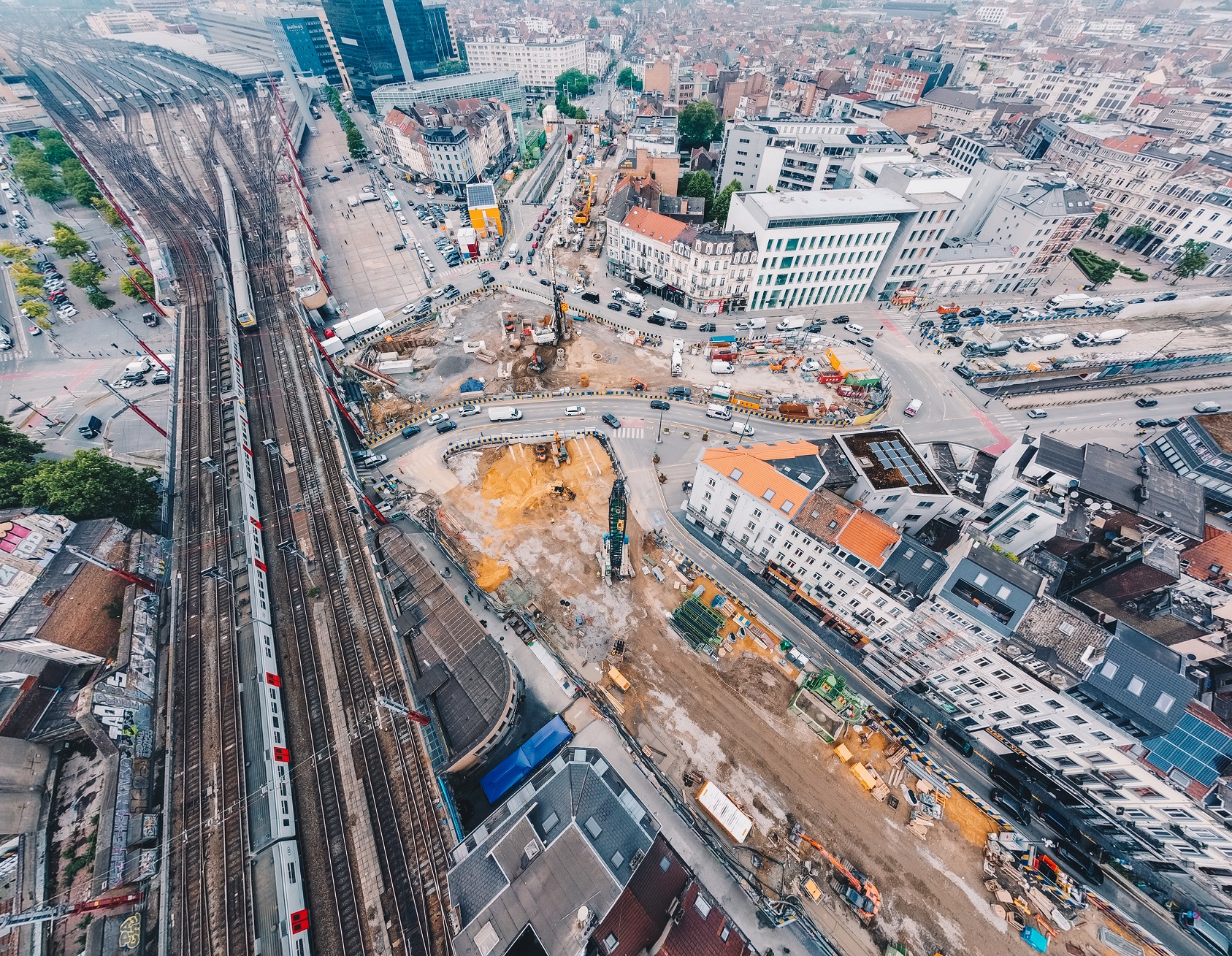Carlos Van Hove, the man in charge of building the next line of the Brussels Metro, is suave and articulate, but he makes a telling slip of the tongue when he explains the massive burrowing under the city. “We started in 1920…” he says, before quickly correcting himself. “Sorry, 2020!”
Even by the epically extended standards of underground city rail projects, that would be a long time. And the Line 3 metro project, which Van Hove is partly overseeing, is still a long way off: it is only scheduled to be fully completed by 2032. Yet the original scheme for the Line 3 has been half a century in the making.
Line 3 will be a new route with 18 stations crossing the city from north to south over a length of 10.3 km. In just 20 minutes, passengers will be able to travel from Evere to the Albert station in Forest, via the North (Nord-Noord) and South (Midi-Zuid) stations.
The overall project is split into two phases. Van Hove, as Director of the North-Albert Metro link, heads the first one: he is supervising the conversion of the existing pre-metro tram line between the two stations into a metro link, with a completion date of 2027. In parallel, the second part, which is expected to take a further five years, will involve building seven new metro stations linking the North Station to Bordet, in Evere.
But it is complicated. Before leading me into the bowels of the Brussels underground at the Albert Station, Van Hove insists on delivering a PowerPoint presentation on the history of the metro system. He starts with a map of Brussels, featuring the current metro. “Look here: there are existing Lines 1,2,5 and 6 on the map. But Line 3 and 4 are missing. The connection is missing. And that's what we're doing,” he says. “We’ve got to interconnect the north and the south.”
There is a long backstory. Van Hove’s Brussels Metro map was already conceived in the 1960s and 1970s. And while other parts of the network have been built, the north-south axis remained a pre-metro. “Even when the tram link was designed, it already anticipated that it would become the metro one day. And that day is now,” he says.
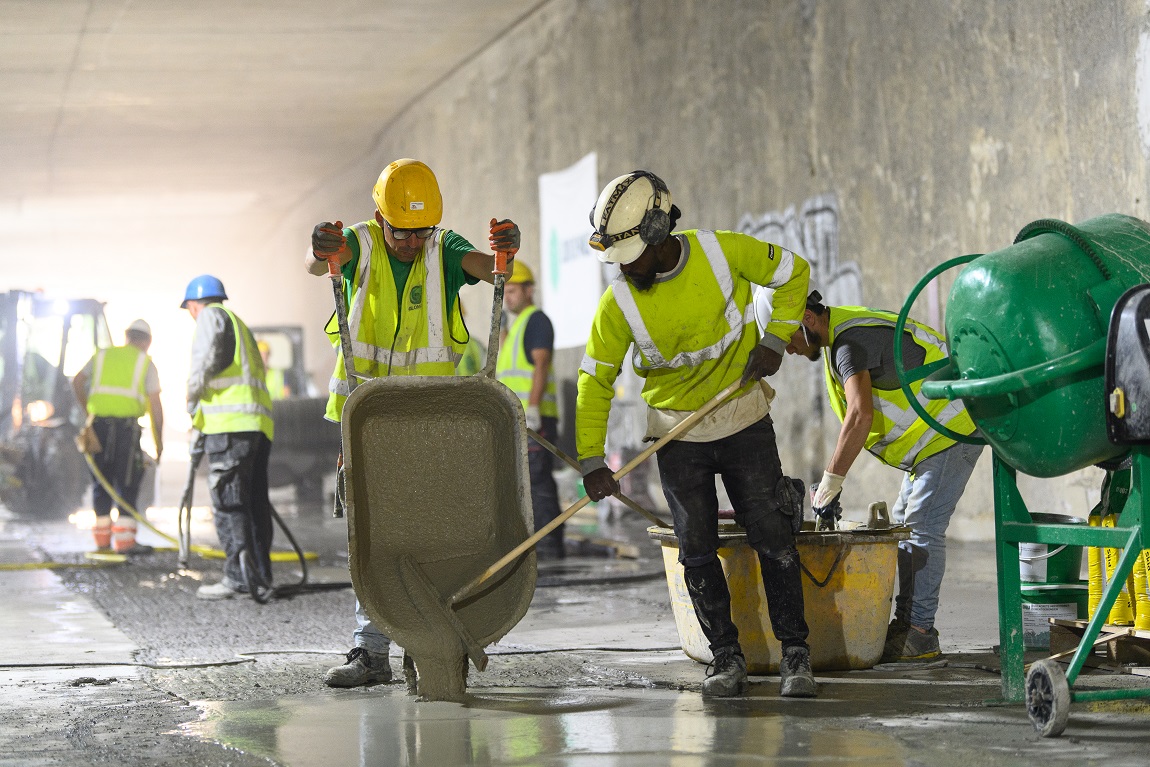
The works in the Albert Station
This is not, of course, the first underground rail project through central Brussels. Ahead of the 1958 World’s Fair in Brussels, authorities undertook massive infrastructure projects, including the North-South railway connection, which meant knocking down hundreds of houses. The future metro line – set to run on old tramlines – is straighter than the curvy train route that also stops at North and South stations.
Public demand
But back to Line 3. Why now? Van Hove explains that it is more than just fulfilling the 1970s vision of the Brussels Metro. “There is a demand for it,” he says. “The number of voyagers per year is going up and it's going to continue rising, so we need to be ready for that.”
He attributes the increased use of public transport not just to the rising population of the Brussels capital region, but improvements in the system and a change in mentalities. “People are switching the modes from personal to public transport,” Van Hove says. “The more offerings you put in, the public follows. And there's a lot of people who no longer have a car.”
This ties in with various limits on car use in the Brussels capital region, with the Good Move plan creating one-way systems and car-free zones, while parking has become more difficult. “It's one thing to restrict access, but you also have to provide alternatives. And the metro is an alternative. It’s mass transport,” Van Hove says.
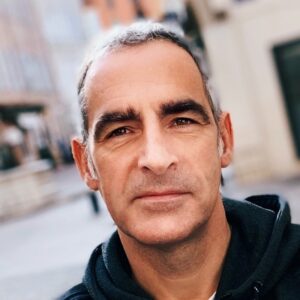
Carlos Van Hove, Director of the North-Albert metro link
The rise in passenger numbers creates its own problems. Van Hove throws out some figures showing that even with the latest T4000 trams, the system is straining at its maximum capacity. In 2009, the Trams 3 and 4 carried around 3,850 people per hour (every six minutes), rising to 6,000 per hour in 2014 (every five minutes, with newer, bigger trams). The metro promises up to 14,300 people per hour, at intervals of every three minutes in rush hour. “We cannot increase our offering on that tram line. The only way to do it is by changing to bigger vehicles, longer vehicles which have a higher frequency,” Van Hove says.
The metro speeds will increase to an average of 30km/hour over the stretch. By contrast, Tram 55, which runs from the North Station to Haren, near Bordet, is one of the busiest and slowest in Brussels, running at just 12.43 km/h during rush hour (equivalent to a speed of a jogger) compared to the average tram speed of 15.98 km/h. The tram journey from the South Station to Bordet currently takes 41 minutes, with one change, but will take 20 minutes directly by metro. The metro will reduce the Albert to Rogier travel time from 14 to 10 minutes.

The hole inside Avenue de Stalingrad
The current Trams 3 and 4, which came into service 15 years ago, run on the pre-metro tracks between South and North stations. However, five tramlines reach the South and four reach the North (including two, Trams 82 and 51, which enter the tunnel at Lemonnier). Not to mention the trains and buses that also pass through the stations. One of the challenges for Van Hove is to rearrange the tram system so that it connects seamlessly with the new metro.
For example, the Tram 51 route which used to run from Heysel in the north to Van Haelen in the south over a 15km route, has already been cut: it still departs from the north, but will now have its terminus at the South Station (which will require extra space for the trams to park overnight).
Albert becomes multimodal
Van Hove’s remit has four elements. The first is to transform Albert into a multimodal station. He hands me a hard hat as he takes me down beneath the current pre-metro level to see how the works are progressing.
The plan is to move the trams, currently at the minus-1 level, to minus-2, as the metro moves onto the tram tracks. The works are mainly on the minus-2 level, which has dust-covered stairs, escalators and walls. It looks as if it is from another era, like a ghost station. The reason is that it was added in the 1990s, when the Albert station was first built.
“Albert was designed in the 1990s already with the aim of becoming multimodal,” Van Hove says, as the trams rumble overhead. He then points to various tunnels disappearing in all directions, explaining how the trams will no longer run through Albert but end their route at the station. “Once we have the Metro in place, then we'll able to cut this branch where the Trams 3 and 3 now exit, and we'll create a new terminus for the new tramlines,” he says.
The Albert station will also be more open architecturally, like the redesigns of the Arts-Loi/Kunst-Wet and Schuman stations. “It will give travellers a clearer view of levels so they can read the station better,” Van Hove says.
Toots and tunnels
The second part involves a reroute of a section of the old North-South tramline, which currently turns a very tight corner between the Lemonnier and South stations. “This corner is already difficult for trams, which need to slow down to 5km/h,” says Van Hove. “So we need to dig a new tunnel to avoid that corner. And we need to build a whole new station.”
The new metro station, between the South Station and Anneessens, will be named after Belgian jazz legend Toots Thielemans. It will be just 100m from Lemonnier, which will be rebuilt as a tram junction that connects the South Station to the canal.
This has meant digging up the entire Avenue de Stalingrad as the new 650m tunnel will be dug. Over the past three years, shops in the Palais du Midi were given portable cabins to continue their operations on Avenue de Stalingrad, known as Stalingrad Village.
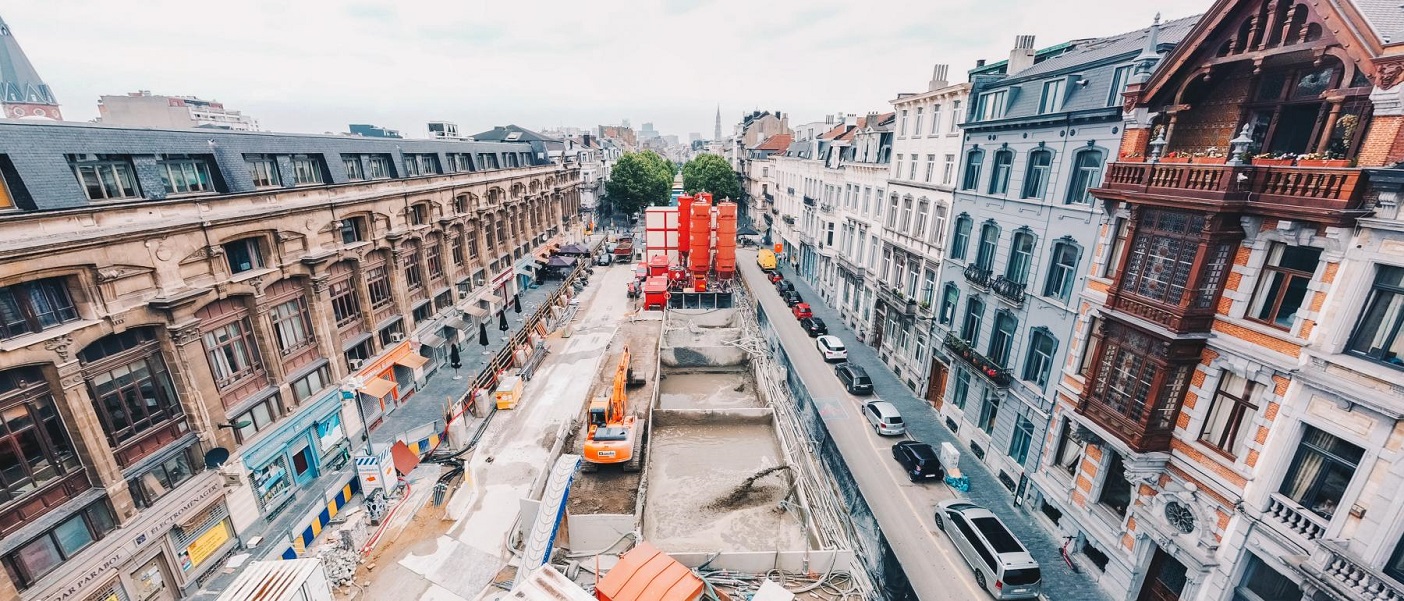
Avenue de Stalingrad, with the Palais du Midi on the right
Some 250,000m³ of earth will be excavated, while 120,000m³ of concrete and 15,000 tonnes of metal will be used. The operation is complicated by the Senne river, which runs nearby, albeit covered. A special ground freezing technique was used to turn the underground water into ice and make the earth impermeable, so digging can be done safely. “We are in a very dense, complicated situation in the city centre,” Van Hove says.
It also means digging under the historic Palais du Midi (which includes a school and a shopping centre), reinforcing the ground from the basement with a technique known as jet grouting to pump cement columns into the soil.
Adapting and automating
The third part of the project is redoing the stations on the old pre-metro line. The platforms are currently at tram level, but the metro has a higher platform, so they need to be raised.
However, the pre-metro stations, designed in the 1970s and 1980s, already anticipated the metro: the escalators all end at a slightly higher level, making passengers walk down a few steps to the tram. It means the forthcoming works only need to raise part of the platform. “That's why the escalators do not go down all the way,” says Van Hove. “It was a temporary thing. But a temporary thing that lasted longer than expected.”
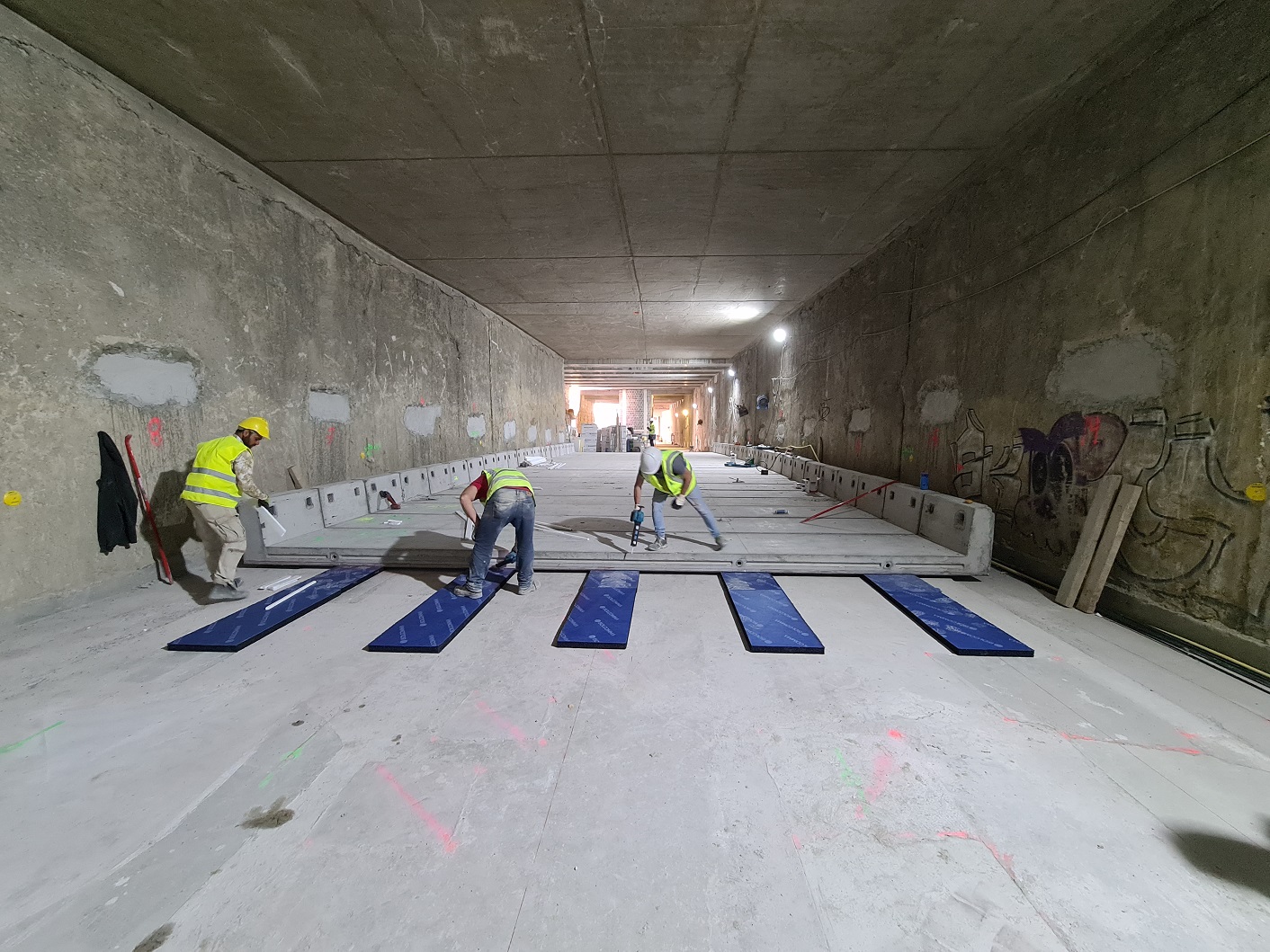
Preparing the tunnel floor for tracks
The third rail used by the metro has already been installed in most of the stations, but many other technical adaptations are needed, like signalling, new computer systems, servers and equipment.
Another key change will be to put glass doors along the platform, which only open when the metro is adjacent. And, eventually, a driverless service will be implemented. “One of the reasons to automate is to prevent people from intruding in the metro system, which is one of the major interruptions of the metro service,” Van Hove says.
The fourth part project is in the North Station, where a new 150m-long tunnel will be dug so the metro line can pass underneath the railway tracks. “This is a crucial hub of the Belgian railway system, so we cannot afford to have any accidents,” Van Hove says.
Preparatory works for the tunnel have been carried out this year, in particular, lowering the water table at the North Station. The metro tunnel will initially be a rear station that will allow the trains to carry out the necessary turning manoeuvres, but it will eventually become a full tunnel section connecting the entire Bordet-Albert line.
Further afield
Most of the other Brussels metro lines follow roads, and construction was extremely disruptive: the roads were closed, the earth was extracted and then the walls and ceilings were built. Between Lemonnier and Albert, the technique will be less unsettling, using ‘cut and cover’: building the roof cover first and then extracting the material beneath.
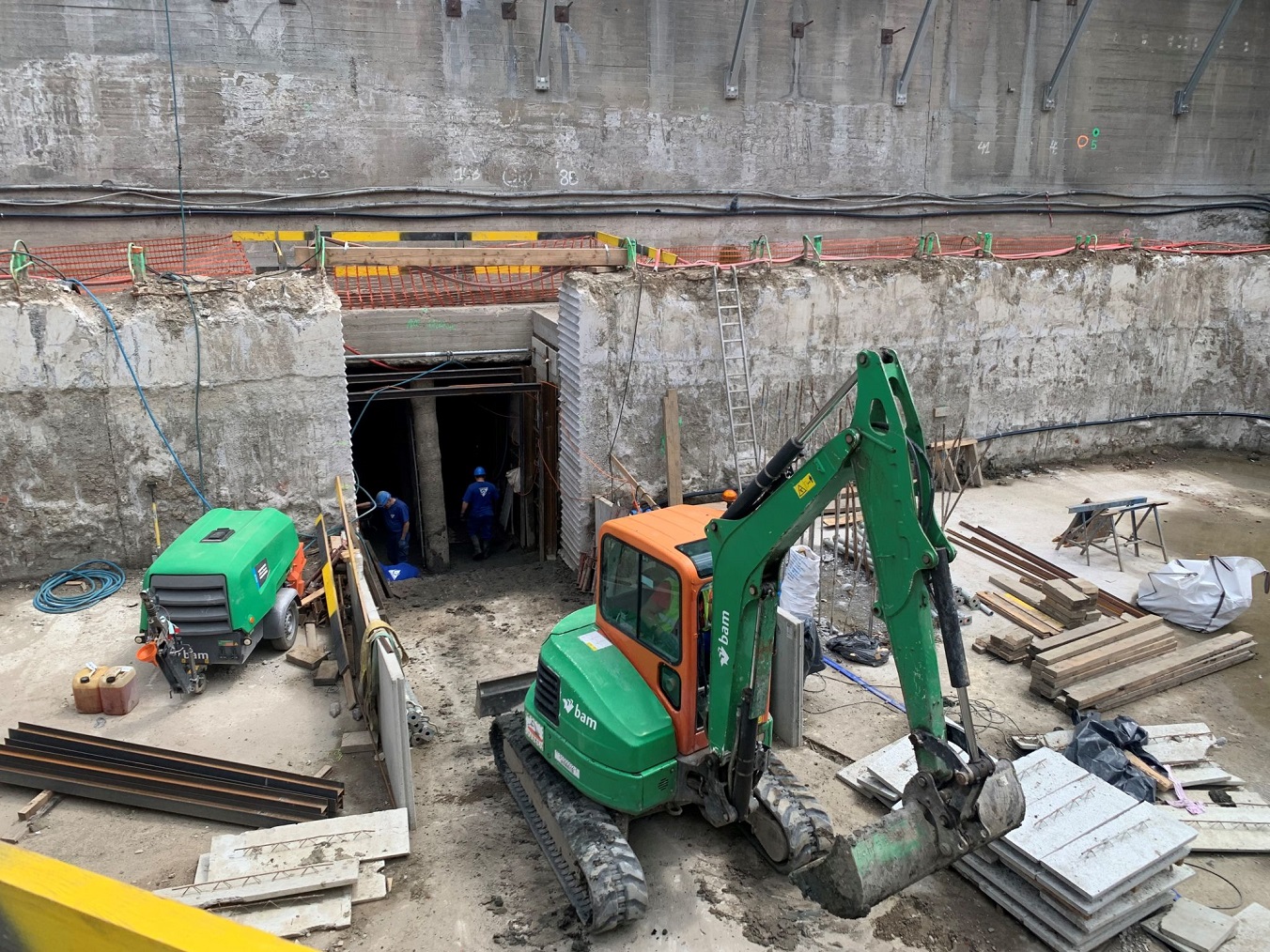
The diggers sit deep in the Albert Station
However, for the route from the North Station to Bordet, a boring machine will tunnel along the route at a speed of 10 metres a day. This has to be at a lower depth than most metro routes, to avoid any impact on housing. “But the advantage is that you can go straight through, you do not need to follow all of those small winding roads,” Van Hove says. The seven stations have also been chosen in public spaces that ensure properties along the route do not have to be expropriated.
Van Hove is not (yet) involved in the northern stretch of Line 3, which has already been delegated to Beliris, set up by the federal government and the Brussels region to finance and oversee the new projects. They will provide €50 million a year for the next 10 years for the line and execute the works.
What happens after Line 3? Van Hove says that Line 4, which was part of the original Brussels Metro plan from the 1970s, might be built too, taking the same Albert to North axis as Line 3, but splitting off to head deeper into Forest or even Uccle. “National, regional and local authorities will study the demands for public transport in the south of Brussels,” he says, and then points towards a concrete wall at the end of the tunnel that faces the Park Duden. “The tree could be extended or split, like Lines 1 and 5, while keeping part of the line in common. But for now, the 4 is going to remain a tram.”
For the moment, at least, he is focused on Line 3. The schedule has already been pushed back, with the deadline for the first phase moving from 2024 to 2027. However, Van Hove is cautious about this, saying it will be “probably by the end of 2027.”
Still, he is proud to be part of it, even if it lasts decades. “It's a privilege to be able to do a project that helps the next generations,” he says. “It takes a long time, but it will do a lot of good.”

